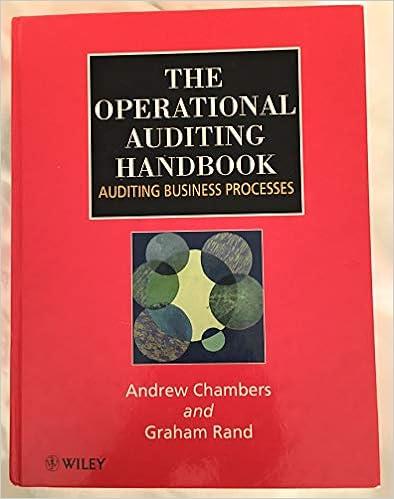Answered step by step
Verified Expert Solution
Question
1 Approved Answer
HEIGHTS CORPORATION Income Statement For the Year Ended December 31, 20x8 8,412,690 3,854,245 4,558,445 1,800,000 2,758,445 Sales Cost of Goods Sold Gross Profit Selling and



HEIGHTS CORPORATION Income Statement For the Year Ended December 31, 20x8 8,412,690 3,854,245 4,558,445 1,800,000 2,758,445 Sales Cost of Goods Sold Gross Profit Selling and Administrative Expenses Income from operations Other Gains and Losses Gain on sale of investments $ 2,400,000 Loss from disposal of subsidiary 1,900,000 Income from continuing operations before Income Taxes Income Tax (30%) Net Income 500,000 3,258,445 977,534 2,280,912 HEIGHTS CORPORATION Statement of Retained Earings For the Year Ended December 31, 20x8 in $ Retained Earnings, 1/1/x8 Add: Net Income Sub-total Less: Dividends Retained Earnings, 12/31/x8 6,400,000 2,280,912 8,680,912 850,000 7,830,912 $ In addition, this information was provided: 1) Common shares outstanding during the entire year (20x8) totaled 500,000, No shares were 26 purchased or sold during 20x8. 2) A warehouse was acquired on January 1, 20x1 for $500,000; Straight-line depreciation was used, with an estimated salvage value of 10% and an estimated life of 10 years. The warehouse was sold for $280,000 on November 1, 20x6. A review of this transaction indicated that depreciation was never recorded for the ten months of 20x6 (from January 1 through November 1) and, consequently, the gain reported in 20x6 was incorrectly stated. 3) in January, 20x8, Heights Corporation changed its method of accounting for inventory from the weighted average method to the FIFO method. The FIFO method of Inventory valuation was used in the current year. Pretax income data is presented below. Pretax Income Using Weighted Average Pretax Income Using FIFO Year 35.000 2015 20x6 20x7 720,000 760,000 825,000 880,000 750,000 795,000 860,000 925,000 20x8 45.006 4) At the beginning of 20x6 the corporation purchased a patent for $650,000 that was estimated to have a useful life of eight years (i.e., 12.5% per year). An error was discovered at the end of 20x8 indicating that a rate of 1.25% per year had been charged to amortization expense for 20x6, 20x7 and 20.8. 5) Early in 20x8 it was noticed that bad debt write-offs had been declining in the past year. The corporation decided that the bad debt estimate would be dropped from 3% to 2% of sales for 20x8. The controller estimated that if the lower rate had been used in past years, the bad debt expenses reported in past years would have been lower by $75,000. The bad debt expense for the current year was calculated using the new rate and is part of selling and administrative expenses. 6) It was determined that accrued interest had not been calculated for an outstanding short- term note owed to the corporation. The note was dated November 1, 20x8 for a six-month term, the principal is $600,000 and the stated interest rate is 5%. 7) The subsidiary was a distinct segment of the business and was disposed of on November 11, 20x8. From January 1, 20x8 through November 11, 20x8 the subsidiary reported a net operating loss of $1,200,000. The loss on the disposal of the subsidiary amounted to $700,000. 8) It was determined that $125,000 spent on advertising during 20x7 and reported fully as an advertising expense in 20x7, should have been an expense of $85,000 in 20x7 and $40,000 in 20x8. 9) It was also determined that $100,000 spent on advertising during 20x6 and reported fully as an expense in 20x6, should have been an expense of $75,000 in 20x6 and $25,000 in 20x7 10) in January, 20x8, Heights Corporation changed its method of depreciation for a major piece of equipment from the double-declining balance method to the straight-line method. The controller prepared a schedule indicating the depreciation expense for appropriate previous years (below). The equipment was acquired on January 1, 20x5 and the estimated life was 10 years. (30% was the effective tax rate for all years indicated.) NOTE: The original estimates used for expected life and salvage value are the same. Depreciation Expense under Double-declining Depreciation Expense under Straight-line Year Difference 20x5 20x6 20x7 20x8 240,000 192,000 153,600 122,880 708,480 100,000 100,000 100,000 100,000 400,000 140,000 92,000 53,600 22,880 308,480 By mistake, for 20x8, the controller recorded depreciation for this piece of equipment at $122,880. 11) At the beginning of 20x8, a piece of equipment purchased on July 1, 20x4 for $600,000 was determined to have an estimated useful life of two years beyond the original estimate. The original useful life was estimated to be six years, the salvage value was estimated at 20% of cost, and the straight line method of depreciation was used. The salvage value was now determined to be 10% of book value. Through an oversight, the revised estimated life and revised salvage value were not part of the depreciation expense calculation for the current year. (i.e., the annual depreciation expense used in prior years was used in error in the current year.) 12) The pain from the sale of investments was considered to be the largest the company had ever experienced. 13) Sales of $230,000 earned in 20x7 were omitted from 20x7 sales and were included in the net sales reported in 20x8. REQUIRED: Prepare a revised Income Statement and revised Statement of Retained Earnings for the year ended December 31, 20x8 in accordance with generally accepted accounting principles. (Note: Assume a 30% tax rate applies to all current and past years.) [Where appropriate, be sure to clearly present and label all calculations.)
Step by Step Solution
There are 3 Steps involved in it
Step: 1

Get Instant Access to Expert-Tailored Solutions
See step-by-step solutions with expert insights and AI powered tools for academic success
Step: 2

Step: 3

Ace Your Homework with AI
Get the answers you need in no time with our AI-driven, step-by-step assistance
Get Started


